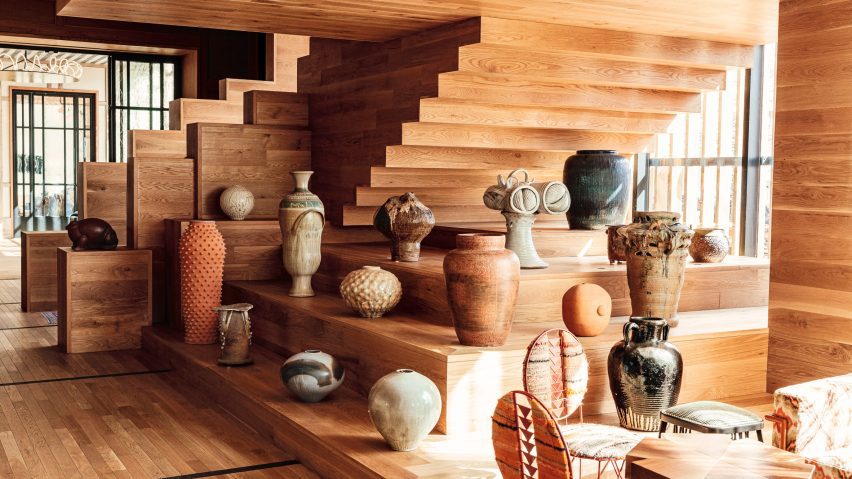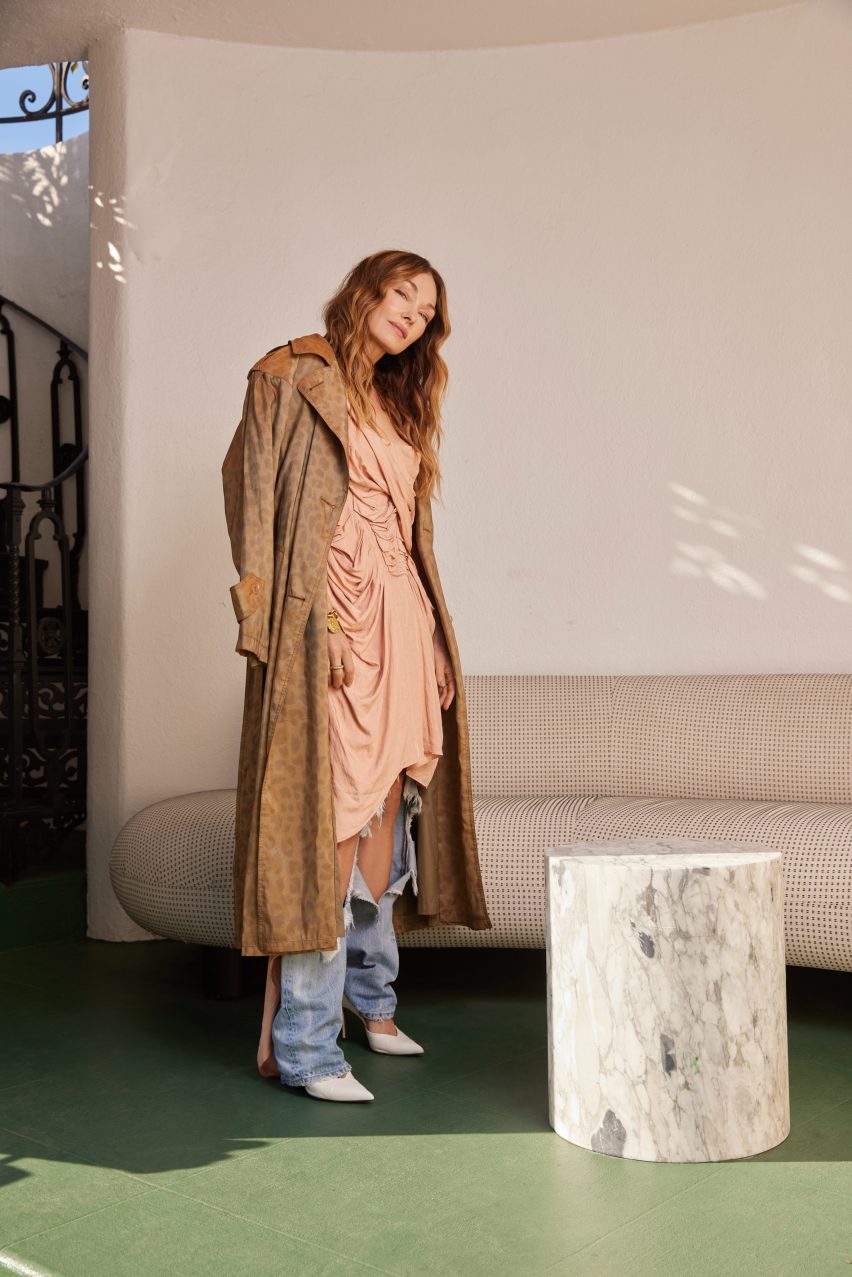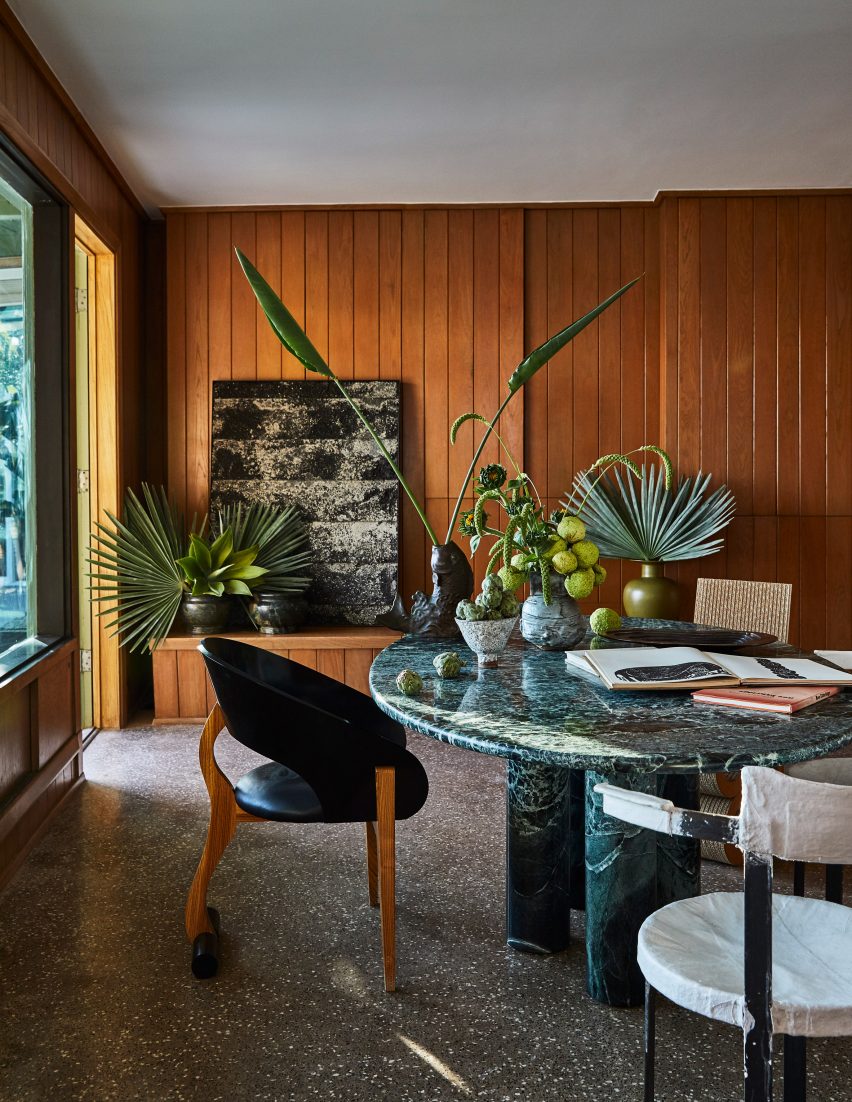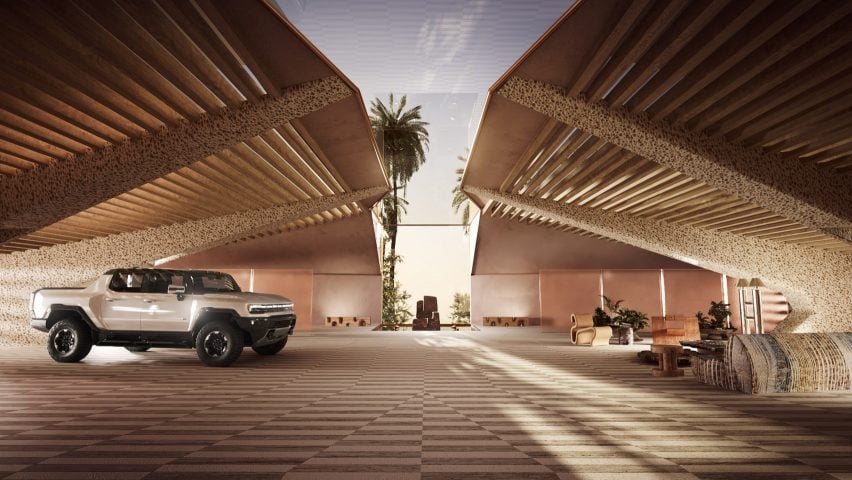
"I think my work stands out because I follow my gut" says Kelly Wearstler
Kelly Wearstler is often hailed as contemporary interior design's most recognisable name. In this interview, she tells Dezeen about crafting her textured and eclectic style.
American interior designer Wearstler has been dressing rooms since her mid-twenties, rising to become one of the discipline's most significant names.
"I'm obsessed with nuance," she told Dezeen. "I view design as boundless and undefined, but if I had to choose a single word to describe my approach it would be 'mixology'."

High-end interior design has been dominated by minimalism and sleekness in recent years, but Wearstler's projects are known for their eclectic grandeur.
Her studio is responsible for the interiors at a slew of luxury hotels, including four locations across North America for the Proper Hotel Group.
For example, she created an Austin branch with a sculptural oak staircase that doubles as a ziggurat of plinths for individual ceramic pots. Meanwhile, The Downtown LA Proper features 136 unique types of vintage or custom-made tile.
"Luxury is more of a feeling than a specific quality"
"To me, luxury is more of a feeling than a specific, tangible quality," Wearstler said. "It's all about texture and sensation, but also storytelling and considered curation."
"The most luxurious spaces bring together unique objects that each have their own history, essence and character, and encourage an elegant conversation between them," she added.
"A technique I always like to use when pursuing a sense of luxury is mixing vintage and antique items with more contemporary pieces. The history and character that come with vintage furniture help to create a 'luxurious' experience."
This approach is also reflected in Wearstler's residential and retail projects, which she tends to fill with unlikely combinations of pieces – a habit she traces back to visiting antique shows and auctions with her mother, who was an antique dealer, as a young girl.

Among these projects is the designer's own 1950s beachfront cottage in Malibu, California, furnished with objects chosen to be "hand-crafted, rustic and raw".
Wearstler also replaced the home's existing shag carpet with seagrass as a nod to the surrounding coastal setting.
"My design philosophy is rooted in a firm commitment to juxtaposition and contrast, whether this be in relation to textures and colourways, materials or even eras in time," said Wearstler.
"For me, contrast is what brings a sense of soul to a space. It creates interest, lets the space take on a life of its own and imbues it with a feeling of genuine authenticity."
"AI has exponentially enriched our creative process"
Wearstler says her design philosophy was partly shaped by working in the film industry early on in her career.
Before forming her eponymous studio in California in 1995, she worked in various roles including set decoration and art direction – an experience she claims shaped her appreciation of the "emotion and atmosphere" of a space.
"My time working as a set designer definitely impacted my approach to interior design," Wearstler told Dezeen.
"Working on film sets taught me the importance of dramatic intent, and that's remained a key element of my work throughout my career."
Despite her penchant for vintage pieces, Wearstler stressed the importance of rising to contemporary challenges – not least artificial intelligence (AI) and its impact on design.
Wearstler's studio has been using generative AI – which she calls an "ally" – since 2021, citing image-generating platforms including DALL-E and Midjourney as tools to generate ideas.
The same year, the designer created a virtual garage, playfully imagined as a home for basketball player LeBron James's electric Hummer, decked out with renderings of Wearstler-designed furniture including the studio's Echo bench and Monolith side table.
"Many people see the introduction of AI as a challenge, but I think of it as one of the greatest tools for growth," said Wearstler. "AI has exponentially enriched our creative process."
"As designers, it's our responsibility to push the boundaries of our craft and to create spaces that elegantly and artistically reflect the world around us," she added. "AI is a vital tool in allowing us to do this in new and extraordinary ways."

Wearstler has published six books and with 2.2 million Instagram followers, she is often considered interior design's most recognisable name.
"I think my work stands out because I follow my gut," she reflected. "Whether I'm designing a hotel, a private residence or a product, I give its emotional and physical attributes equal consideration."
"Most importantly, I strive to bring my clients and customers joy through my designs. I'm not sure if that's what makes me the 'most recognisable name', but if you design with the person who will be living in a space, or with a light fixture or chair, in mind, your work will resonate."
Dezeen In Depth
If you enjoy reading Dezeen's interviews, opinions and features, subscribe to Dezeen In Depth. Sent on the last Friday of each month, this newsletter provides a single place to read about the design and architecture stories behind the headlines.